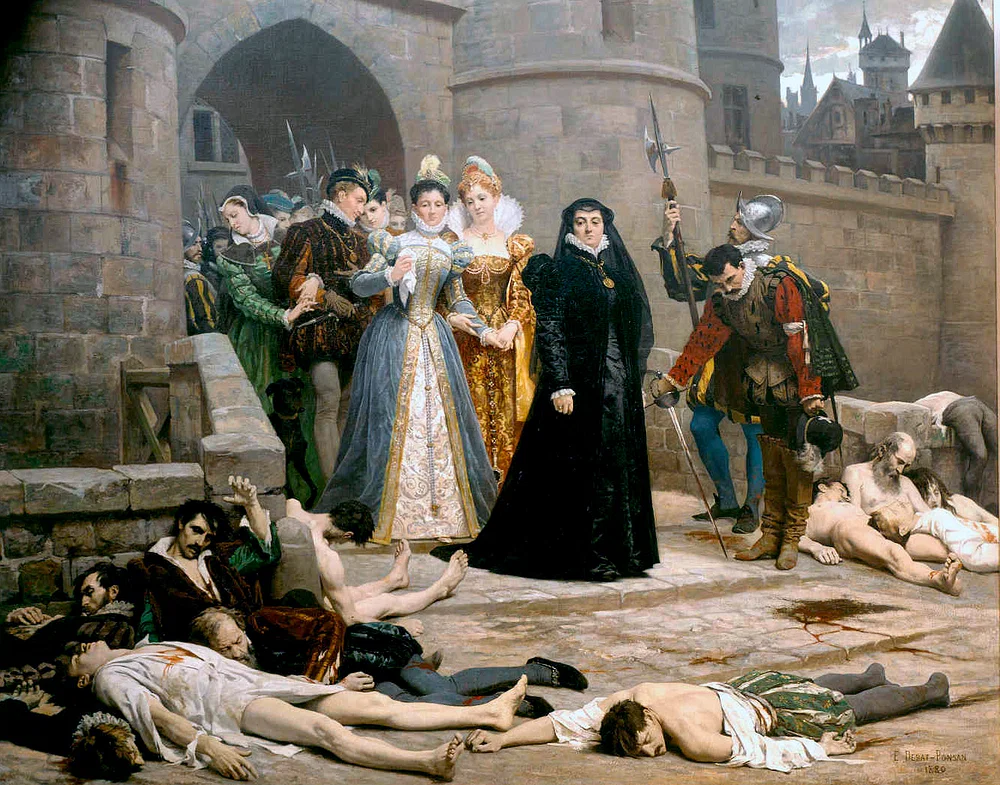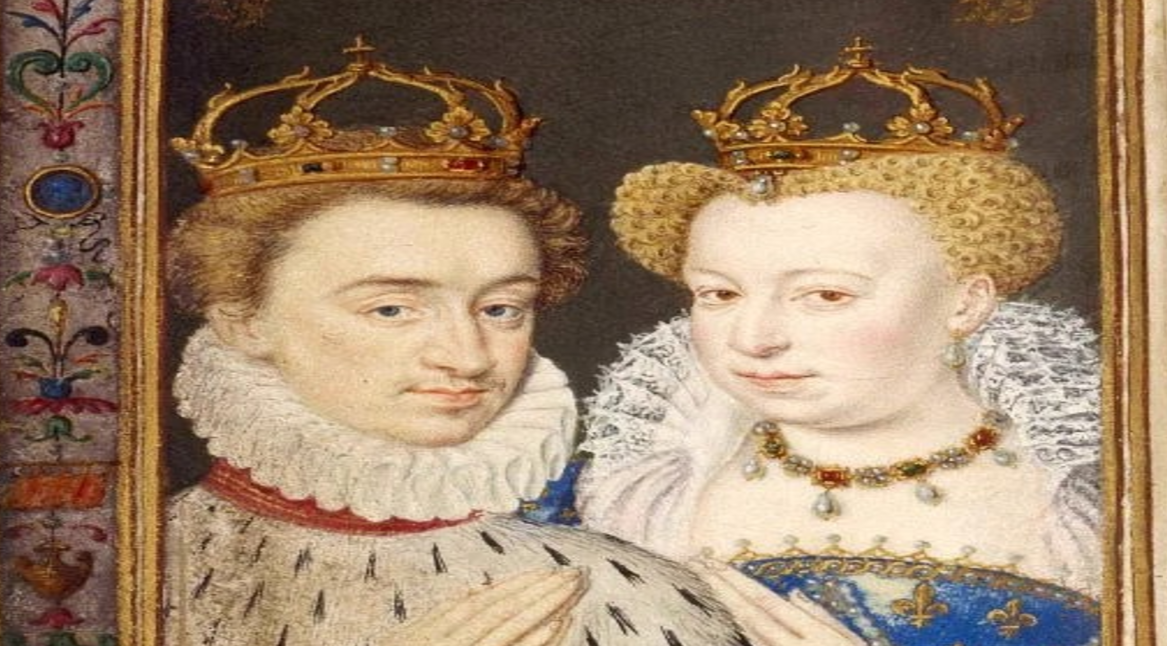By Carmen Chang,
The 16th century witnessed events that left a mark not only in France, but in the entire continent of Europe. In France, this era was defined by seven successive wars of religion and the St. Bartholomew’s Day Massacre. It was a complex and tumultuous century, to say the least. Marguerite de Valois, daughter of Catherine de’ Medici and Henry II, represents a figure who experienced firsthand many of the significant events of her time. The memoirs she wrote at the end of the century offer a portrayal of her experiences during selected periods. Our task is to identify the clues in her text that refer to factual events mentioned in her work. We will attempt to extract references that echo real events, examining how the memoirs serve as a testimony of history, considering the dual role of the author as both an actor and a spectator.
Like all memoirs, those of Marguerite de Valois are a work where the “I” is strongly present. This narrative instance refers to a human entity in relation to her surroundings first, then to the society and the era in which she lived. Methodologically, we will first examine how Marguerite de Valois’s memoirs reflect her relationships –as a princess and then a queen— with her entourage (her brothers, her mother, her husband). Then, on a broader scale, we will look at the historical references in her work.

Marguerite de Valois’s relationships with her family members were neither constant nor straightforward. They varied according to circumstances and interests. Regarding her relationship with her mother, Catherine de’ Medici, history records that it was not privileged because her mother favored King Henry more. A complex and difficult relationship between mother and daughter emerges in the memoirs. If the mother carried out the King’s requests to the letter, even approving her daughter’s imprisonment, she often disregarded Marguerite’s emotions and opinions, even on crucial matters. Two contrasting examples illustrate this complexity. On one hand, Marguerite’s mother informs her, with her acquiescence, that the King has taken her hostage out of fear she might reveal castle plots to her brother and husband. On the other hand, on another occasion, she defends Marguerite to the King, who wants to limit her interactions with others, invoking the past as a bygone period and lamenting that her daughter was born into it: “My daughter is unfortunate to have been born in such a century; in our time, we spoke freely to everyone…” The Queen mother played a dual role as both mother and regent, which is why Marguerite sought her counsel or approval on major decisions. This was the case when she demanded the land dowry the King was supposed to grant her and when she informed her mother of her decision to leave the castle to join her husband in Gascony.
The memoirs also detail Marguerite’s relationships with her brothers, which were far from straightforward or consistent. Her relationship with her brother, King Henry III, was often marked by distance and distrust. She acknowledges that he mistrusted her because she married Henry of Navarre, a Huguenot, and was too attached to her youngest brother, François of Alençon. History also records that Marguerite de Valois married Henry of Navarre. This marriage did not have the unanimous consent of her family. The King continued to suspect his sister, viewing her as a potential enemy who might inform her husband of castle intrigues. The memoirs recount this tumultuous relationship with her husband, who had many mistresses. An example is the King of Navarre’s relationship with Fosseuse, illustrating their turbulent relationship.
These examples show the author’s intent to depict the alliances and antagonisms that form and dissolve according to circumstances and each clan’s interests. Having experienced many situations representing historical milestones, she testifies to them in her work, albeit not without subjectivity.

On a broader scale, to what extent can Marguerite de Valois’s work be considered a testimony to reality, reflecting the major events that marked the historical periods she describes? The image Marguerite paints of the plots, slander, and alliances in her surroundings speaks volumes about what was happening outside the castle and throughout France. Indeed, the memoirs represent the historical conflicts between Catholics and Huguenots. This conflict marked all of Europe, including France. The complicity between individuals mentioned in the work evolves according to religious affiliation. The King of Navarre, although a brother-in-law, is seen as an enemy because he is a Huguenot. Hostilities between the two clans were at their peak as war was declared for religious reasons. Each clan fortified itself in its stronghold, seeking alliances based on religious affiliation. The St. Bartholomew’s Day Massacre, initiated in Paris on August 24, 1572, was the climax of this conflict between Catholics and Protestants. Marguerite does not shy away from mentioning this tragic event, which had repercussions on her future marriage with Henry of Navarre. Indeed, the Queen mother openly opposed her joining her husband in Gascony after St. Bartholomew’s Day because he had allied with the Huguenots after proclaiming himself Catholic: “telling me that after St. Bartholomew’s Day, when I refused the proposal she made to me to separate from our marriage, she praised my intention because he had become Catholic; but now that he had left the Catholic religion and become a Huguenot, she could not allow me to go to him“. The declarations of war and peace between Catholics and Huguenots are frequently mentioned in Marguerite de Valois’s memoirs. This conflictual situation, marking all cities between the two clans, affected the movement of people, especially members of royal families or notable individuals. During her trip to the Spa cure, Marguerite de Valois did not hesitate to highlight the insecurity of certain regions due to this religious conflict that had persisted for years: “knowing the danger we were in and seeing that it took us five or six days to reach La Fère, always passing at the mercy of one or the other”.
These examples illustrate that Marguerite de Valois’s memoirs represent a testimony to history, as she was deeply involved, both as a queen who witnessed the evolution of political and religious situations and as a cultured woman capable of discerning analysis. Consequently, Marguerite de Valois’s memoirs can be seen as a historical testimony to the events she experienced. Her status as a Queen and her proximity to the courts allowed her to be aware of what was happening and being projected. However, this historical reading of the facts remains tinged with subjectivity, as a historiographer is not supposed to openly display a recurrent “I” that taints an objective view of events. Nonetheless, Marguerite, from the beginning of her memoirs, sought to establish a pact with her reader, promising to tell the naked truth.
Reference
- Marguerite de Valois. “Mémoires et discours”. Saint-Etienne, 2004.




